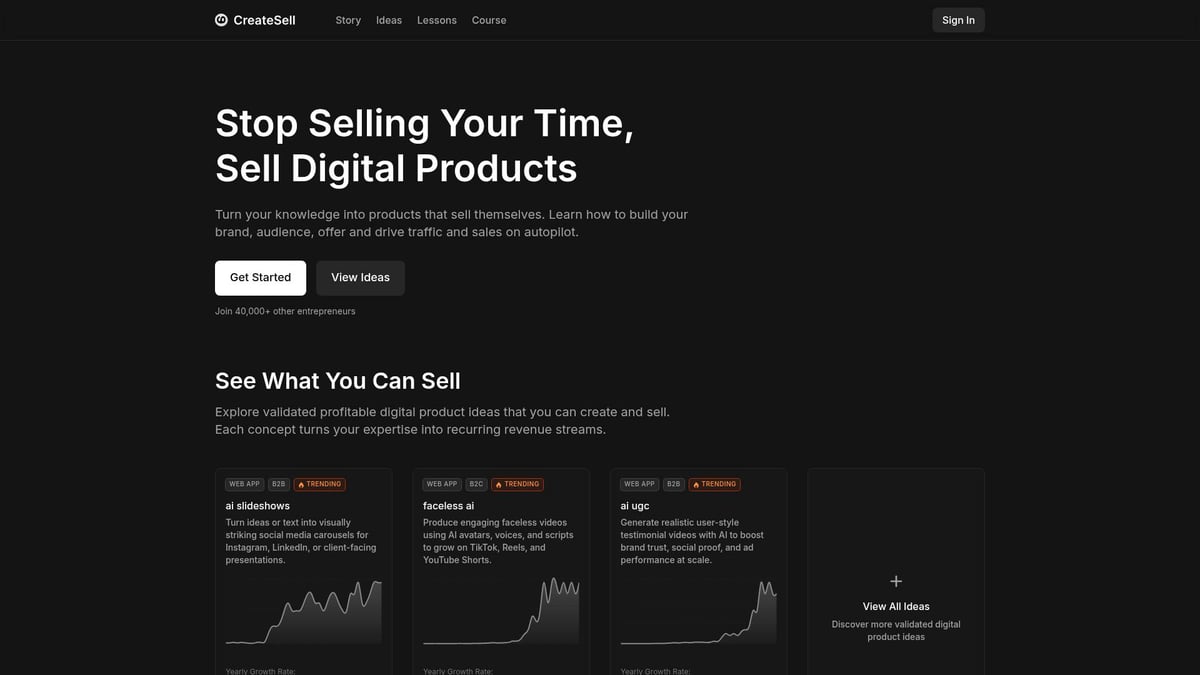In a world crowded with endless choices, only a handful of products truly capture our attention. Why do some brands break through the noise while others fade into the background?
The answer often lies in understanding niche product meaning. This guide will show you how niche products can give your business a powerful edge in 2025.
Get ready to explore what makes niche products unique, why they matter now more than ever, and how you can find your own path to market success. We’ll cover real-world examples, actionable steps, and proven strategies to help you stand out and thrive.
What is a Niche Product?
Understanding the niche product meaning is the first step to unlocking new business opportunities in 2025. With markets saturated by generic options, niche products offer a unique pathway to stand out and build loyal audiences.

Defining Niche Products
The niche product meaning centers on items or services designed for a specific audience with particular needs. Unlike mainstream products, which target a broad market, niche products focus on depth over breadth.
For example, a vegan leather phone case appeals to eco-conscious consumers, while gluten-free baking mixes serve those with dietary restrictions. AI-powered resume builders attract job seekers who want a personalized, tech-driven edge.
Key characteristics of niche products include:
- A narrowly defined target audience
- Specialized features that address unique preferences
- Limited appeal outside their core group
A common misconception is that niche products are too small to be profitable. In reality, they often command higher loyalty and can carve out significant market share within their chosen segment.
The Importance of Niche Products in Today’s Market
The niche product meaning has evolved as consumers demand more personalized solutions. People now seek brands that truly understand their unique needs, not just generic products.
The rise of micro-communities and hyper-targeted solutions has transformed how businesses approach product development. According to Salesforce (2023), 73% of consumers expect brands to recognize and address their individual preferences.
Digital platforms and e-commerce have made it easier than ever for businesses to reach specialized audiences. This shift enables even small brands to thrive by focusing on niche products that resonate deeply with specific groups.
Types of Niche Products
Exploring the niche product meaning reveals a wide range of possibilities. Niche products can be physical, such as eco-friendly sneakers or artisan candles, or digital, like AI-driven writing tools or specialized online courses.
Service-based niche products are also gaining traction. Examples include pet grief counseling or coaching for neurodivergent professionals. For 2025, trending categories include eco-friendly goods, wellness products, AI-powered tools, and offerings in the creator economy.
To dive deeper into digital examples and discover how entrepreneurs are succeeding in this space, check out Digital product niches explained.
Niche Product vs. Niche Market
Understanding the niche product meaning also involves distinguishing between a niche product and a niche market. A niche product is a specialized item, while a niche market refers to the specific group it serves.
A general product can be repositioned for a niche audience. For instance, mainstream project management software may be tailored for architects or creative agencies, transforming it into a niche offering.
Here’s a quick comparison:
| Aspect | Niche Product | Niche Market |
|---|---|---|
| Focus | Specialized item or service | Specific customer group |
| Example | Gluten-free baking mix | Health-focused consumers |
Why Niche Products Matter for Entrepreneurs
Grasping the niche product meaning is essential for entrepreneurs aiming to thrive in competitive markets. Niche products face less competition, allowing brands to stand out and foster customer loyalty.
These products often support premium pricing, as customers value tailored solutions. According to Shopify (2023), niche brands enjoy double the customer retention compared to broader competitors.
Success stories abound, from small businesses scaling up thanks to a focused approach, to startups building strong brands by serving deeply invested communities. For entrepreneurs, niche products offer a powerful path to differentiation and sustainable growth.
Key Benefits of Focusing on Niche Products
Unlocking the true potential of a business starts with understanding niche product meaning. While mainstream markets are crowded and competitive, focusing on niche products offers a unique path to growth. Let's break down the core benefits that set niche strategies apart for 2025.

Reduced Competition and Increased Brand Loyalty
One major advantage of pursuing niche product meaning is the significant reduction in competition. By targeting a specific audience, businesses face fewer direct rivals, allowing them to carve out a loyal customer base.
- Brands like Darn Tough Socks and Beardbrand have thrived by focusing on specialized needs.
- Niche brands experience 30% less price competition compared to mainstream brands, according to Statista 2023.
Customers in niche segments often feel understood and valued, resulting in stronger brand loyalty. If you're curious about what trends are shaping these opportunities, check out the latest Niche Market Trends for 2025 for more insight.
Higher Profit Margins and Pricing Power
Another key benefit tied to niche product meaning is the potential for higher profit margins. Since niche products solve unique problems, customers are willing to pay a premium for specialized solutions.
For example, gluten free foods and artisanal pet treats command higher prices because of their tailored value. This pricing power stems from limited alternatives and a deep understanding of the customer.
Specialization also builds perceived value, making it easier for brands to justify premium pricing and achieve stronger financial performance.
Deeper Customer Relationships and Community Building
Niche product meaning goes beyond sales—it’s about community. Brands that serve specific audiences can build strong, engaged communities around shared interests or challenges.
- Peloton and Notion are excellent examples of community driven brands.
- Feedback loops and co creation become natural, as users feel invested in the product’s evolution.
These deeper relationships foster loyalty and advocacy, turning customers into brand ambassadors who help fuel organic growth.
Agile Marketing and Innovation
Focusing on niche product meaning allows brands to be more agile. With a smaller, well defined audience, it’s easier to test new ideas, gather feedback, and iterate quickly.
For instance, AI powered digital planners have rapidly adapted to remote work trends by listening to user needs. This agility helps brands stay ahead of market shifts and continuously innovate in ways that resonate with their core users.
Overall, embracing niche product meaning sets the stage for sustainable growth, greater customer loyalty, and lasting differentiation in an ever evolving marketplace.
2025 Trends: The Evolution of Niche Products
The landscape of niche product meaning is evolving rapidly, driven by digital innovation and shifting consumer values. In 2025, entrepreneurs and brands must stay ahead of the curve by understanding the emerging trends that redefine what it means to stand out in a crowded marketplace.

Digital Transformation and the Rise of Micro-Niches
Digital transformation is revolutionizing the niche product meaning for entrepreneurs and creators. With the rise of digital-first products and services, businesses can now address even the most specific needs.
Micro-niches are gaining momentum, targeting hyper-specific audiences such as productivity tools for neurodivergent users or fitness apps for remote workers. According to Gartner, 60% of new digital products in 2025 are expected to focus on micro-niche audiences.
This shift allows brands to deliver tailored solutions and build loyal communities. Understanding niche product meaning in the digital age means recognizing the power of going deep, not just broad, when it comes to product development.
Sustainability and Ethical Consumption
Sustainability is reshaping niche product meaning as consumers increasingly seek eco-friendly and ethical options. Products like plant-based packaging and carbon-neutral SaaS platforms are leading the way in responsible innovation.
As highlighted in Niche Market Trends 2025: Top Sustainable & Tech Niches Revealed, demand for sustainable and tech-driven products is expected to surge. Insights from Mintel’s 2024 Global Consumer Trends Report show that buyers are more likely to choose brands that align with their values.
For businesses, embracing sustainability is not just a trend but a strategic move to capture a conscientious audience and define new standards for niche product meaning.
AI and Personalization
AI is elevating the niche product meaning by enabling unprecedented levels of personalization. From AI-powered resume builders to customized learning platforms, artificial intelligence helps brands deliver unique experiences tailored to each customer.
Examples include AI-generated art tools and platforms that adapt content based on user behavior. This level of personalization increases user engagement and retention, making products more relevant and valuable.
In 2025, integrating AI will become essential for those aiming to redefine niche product meaning and offer solutions that truly resonate with specialized audiences.
Creator Economy and Digital Product Expansion
The creator economy is expanding the possibilities of niche product meaning. More individuals are launching digital products such as online courses, templates, and e-books, catering to specific interests.
Statista projects digital product sales to grow by 18% in 2025, opening new doors for solopreneurs and micro-businesses. These creators leverage their expertise to serve communities that mainstream products often overlook.
By focusing on authenticity and community-driven content, the creator economy is pushing the boundaries of what niche product meaning can represent in the digital age.
Globalization and Cross-Cultural Niches
Globalization is redefining niche product meaning by enabling brands to tap into underserved international markets. Localized products, such as language-specific SaaS tools, cater to unique cultural preferences and needs.
A notable example is the global rise of K-beauty, which transformed from a local phenomenon to a worldwide niche market. By understanding cultural nuances, businesses can create offerings that appeal to global communities.
In 2025, the evolution of niche product meaning will be shaped by the ability to connect with diverse audiences across borders, turning local trends into global success stories.
Step-by-Step Guide: How to Identify a Profitable Niche Product in 2025
Are you ready to unlock the true power of niche product meaning in 2025? This step-by-step guide will help you discover, validate, and launch a profitable niche product from scratch. Whether you are a first-time entrepreneur or an experienced founder, following these proven steps will set you up for market success.
Step 1: Research Emerging Trends and Consumer Needs
Start your journey by understanding the latest trends that shape consumer behavior. Use Google Trends, Exploding Topics, and social media platforms to spot shifts in demand. Dive into Reddit and niche forums to uncover what people are talking about and what problems remain unsolved.
For example, the rise of remote work productivity tools became apparent by tracking keywords and conversations online. This approach is essential to grasp the real scope of niche product meaning and ensures you are not working off outdated assumptions.
- Use trend tools to reveal underserved markets
- Analyze hashtags and trending topics
- Join online groups relevant to your interests
By staying ahead of trends, you increase your chances of finding a profitable niche before it becomes saturated.
Step 2: Validate Market Demand and Competition
Validating your idea is critical to understanding niche product meaning from a business perspective. Use keyword research tools to gauge search volume and check how many competitors already exist. Analyze reviews of similar products to spot gaps or frustrations.
According to CB Insights, 42 percent of failed startups cite lack of market need as a core reason. This highlights the importance of confirming real demand before investing further.
- Assess market size with keyword data
- Study competitors’ strengths and weaknesses
- Identify if the market is growing or shrinking
This validation process ensures your idea solves a real problem and is not lost among countless alternatives.
Step 3: Define Your Target Audience and Their Pain Points
A true understanding of niche product meaning involves knowing exactly who you serve. Build detailed buyer personas based on demographics, behaviors, and motivations. Conduct surveys, interviews, or polls to hear directly from potential customers.
For instance, if you are targeting busy solopreneurs, find out what tasks consume most of their time or what tools they wish existed.
- Map out user journeys and frustrations
- Create a table of top pain points and desired outcomes
| Pain Point | Desired Outcome |
|---|---|
| Time-consuming tasks | Streamlined processes |
| Lack of organization | Easy-to-use planners |
| Overwhelmed by options | Curated solutions |
The more specific your audience and their struggles, the stronger your niche product meaning will resonate.
Step 4: Assess Your Unique Value Proposition
To stand out, you must clarify what makes your product different. Evaluate competing solutions and pinpoint features or benefits only you can offer. Your unique value proposition (UVP) is the heart of your niche product meaning and should be easy to articulate.
Consider eco-friendly planners with goal tracking or AI-powered tools for specific professions. Make a list of features that set you apart and test your UVP with real users for feedback.
- Highlight what is exclusive about your offer
- Use clear, benefit-driven messaging
A compelling UVP attracts attention and builds trust with your target audience.
Step 5: Prototype and Test Your Product Idea
Building a minimum viable product (MVP) is the next essential step. Use simple tools or platforms to create a basic version of your idea. Launch a beta test with a small group to collect honest feedback and iterate quickly.
For digital products, platforms like Building and selling digital products offer step-by-step guidance to turn your concept into reality. Testing early helps you refine your approach and validate your niche product meaning before a full-scale launch.
- Develop a basic prototype or sample
- Invite early adopters to test and review
- Iterate based on real user insights
Early feedback reduces risk and increases your odds of success.
Step 6: Plan Go-to-Market and Launch Strategy
A well-executed launch can make or break your niche product meaning in the market. Choose the right sales channels, such as Shopify, Gumroad, or Amazon, depending on your product type. Build anticipation through pre-launch waitlists, content marketing, or influencer partnerships.
For example, digital planners often generate buzz through email waitlists and social media teasers. Focus on clear messaging that highlights your UVP and addresses customer pain points.
- Select channels that match your audience
- Use storytelling to generate excitement
- Partner with influencers for broader reach
A strong go-to-market plan sets the stage for sustainable growth.
Step 7: Measure, Iterate, and Scale
After launch, track key performance indicators like sales, customer retention, and engagement. Use analytics and customer feedback to refine your product, messaging, and marketing strategies. This ongoing process is at the core of mastering niche product meaning and achieving long-term success.
Automation tools can help you scale operations without sacrificing quality. Look for partnership opportunities to expand your reach while maintaining focus on your unique offering.
- Monitor key metrics regularly
- Use customer insights for continuous improvement
- Plan for sustainable scaling
By embracing measurement and iteration, you ensure your niche product evolves with the market and continues to deliver value.
Strategies for Launching and Growing a Niche Product Business
Launching a business around a unique product is both exciting and challenging. To carve out your space in today’s crowded market, you need a clear approach that aligns with true niche product meaning. Let’s break down step-by-step strategies to help you build, grow, and sustain a thriving niche brand.
Building a Distinctive Brand Identity
A strong brand identity is essential when you want your business to stand out and convey the niche product meaning. Start with clear messaging that connects to your audience’s unique needs. Use memorable visuals, consistent colors, and a compelling story.
Look at brands like Glossier or Death Wish Coffee. Their branding instantly signals what they stand for and who they serve. In niche markets, trust is everything. Make your values and expertise visible at every touchpoint, from your website to your packaging.
Focusing on authenticity and relevance helps your niche product meaning shine through, attracting loyal customers who share your vision.
Growing and Engaging Your Audience
Community is the backbone of any business rooted in niche product meaning. Build your audience through content marketing, educational posts, and genuine social interactions.
Encourage user-generated content and share customer stories. Testimonials and reviews are powerful tools that build credibility. According to HubSpot, 80% of niche brands attribute their growth to strong community engagement.
Host Q&As or live events to connect directly with your audience. Every interaction is a chance to reinforce your expertise and the deeper meaning behind your niche product. When customers feel included, they become your brand advocates.
Leveraging Automation and Digital Tools
Scaling a business tied to niche product meaning requires smart use of automation. Streamline repetitive tasks with tools for email marketing, customer support, and CRM systems. Automated onboarding, especially for SaaS or digital products, enhances the user experience and frees up your time.
For digital entrepreneurs, following Steps to sell digital products can clarify which platforms and tools best suit your goals. Use chatbots to answer FAQs, schedule campaigns, and track analytics for ongoing improvement.
By integrating automation, you focus more on innovation and less on manual work—helping your niche product meaning translate into real results.
How CreateSell Empowers Digital Product Entrepreneurs
CreateSell is dedicated to helping founders understand true niche product meaning and transition from trading time for money to selling scalable digital products. Their resources guide you through market validation, brand building, automation, and ongoing community support.

With step-by-step guides and real-time data, CreateSell empowers users to identify and launch profitable niche digital products with confidence. Many entrepreneurs have built sustainable businesses by leveraging CreateSell’s actionable insights and support network.
If you want to harness the full potential of your niche product meaning, CreateSell offers the practical roadmap and tools you need for success.
Scaling Sustainably and Avoiding Common Pitfalls
Growth is exciting, but it’s easy to lose focus as your business expands. To maintain the integrity of your niche product meaning, prioritize quality and customer satisfaction.
Avoid the trap of overextension—stay true to your core audience. Learn from failed launches where brands tried to please everyone and lost their edge. Regularly seek feedback, iterate, and adjust your offerings.
Sustainable scaling means balancing ambition with discipline, ensuring your niche product meaning remains at the heart of everything you do.
Real-World Examples and Case Studies of Niche Product Success
Exploring real-world examples brings the concept of niche product meaning to life. Let’s dive into standout case studies that showcase how businesses have leveraged niche focus for remarkable growth, and what you can learn from their journeys.
D2C Physical Niche Product Case Study
Allbirds is a prime example of how understanding niche product meaning can lead to impressive success. The company entered the crowded footwear market by focusing solely on eco-friendly shoes made from sustainable materials.
By telling a transparent story about their sourcing and production, Allbirds built trust and loyalty among environmentally-conscious consumers. Their targeted marketing efforts resonated with a specific audience who valued sustainability over brand hype.
Allbirds’ strategy paid off, reaching over $300 million in annual sales by 2023. Their journey highlights how a clear niche product meaning, combined with authenticity, can help brands carve out a unique space in competitive markets. For more on how niche eCommerce is growing, see The Growth of Niche eCommerce Markets in 2025.
Digital Niche Product Case Study
The rise of digital products has redefined niche product meaning for the creator economy. Notion templates, especially those tailored for project managers, are a great example. These digital resources address specific workflow challenges, offering customizable solutions that mainstream tools often overlook.
Creators of these templates build engaged communities by sharing tips, updates, and encouraging user feedback. This community-driven approach fuels word-of-mouth growth and recurring revenue streams.
If you’re curious about what types of digital products are thriving, check out the Best digital products to sell for more insights and examples that illustrate niche product meaning in action.
Creator-Led Niche Product Case Study
Online course creators demonstrate another facet of niche product meaning. Many focus on highly specialized topics—such as marketing for yoga instructors or productivity for freelance writers—allowing them to monetize deep expertise.
These creators connect directly with their communities, building loyalty and trust through tailored content and interactive experiences. The creator economy is booming, projected to reach $480 billion by 2027, and much of this growth is powered by niche offerings.
By zeroing in on a well-defined audience, creator-led products exemplify how niche product meaning translates into sustainable revenue and devoted fans.
Lessons Learned from Failed Niche Products
Not every niche venture succeeds, and understanding why is crucial to grasping niche product meaning. Common pitfalls include launching without proper market validation, unclear differentiation, or neglecting ongoing marketing.
For instance, several niche fitness apps targeting micro-audiences failed because they didn’t clearly communicate their unique value or lacked a robust go-to-market strategy. The lesson? Even the best niche product meaning must be paired with research, positioning, and consistent outreach.
Entrepreneurs can avoid these mistakes by validating demand early, listening to feedback, and staying focused on their audience’s evolving needs.
Now that you’ve seen how niche products can help you stand out and build a business that really lasts, why not take the next step and put these strategies into action? If you’re ready to move from just having ideas to actually building your own digital products, CreateSell is here to guide you at every stage. You’ll find step by step support, real world insights, and practical tools to help you turn your knowledge into a thriving business. It’s time to stop trading your time for money and start creating something that grows on its own. Get Started